African Fashion is ever evolving and extremely versatile. Mostly made from Ankara fabric, African lace, Kente, Adire, Akwaete, Aso oke and several other authentic African fabrics, African Print outfits have remained in hot demand all over the world, especially in the Americas. Before we highlight the 15 best African fashion styles in 2022, we would take a look at some of the popular fabrics used in making the breathtaking outfits.
Ankara
The ankara fabric is a wax-printed cotton textile made with persevering patterns with mostly symbolic designs. It dates back to the early colonial era.
Outfits that can be made with Ankara:
- Ankara shirt
- Ankara top/blouse
- Ankara skirt
- Ankara gowns
- Ankara dress, and as part of shoes, scarves, etc.
Ankara print outfits can be worn by both men, women, and children.
The ankara fabric, is one of the most versatile and popular fabric used in making different African styled outfits for all occasions. This fabric been a long-lasting favorite amongst African fashion enthusiasts all over world. The popularity of this fabric and the outfits made from it, is ever increasing—with the fashionistas choosing to use ankara in almost every attire.
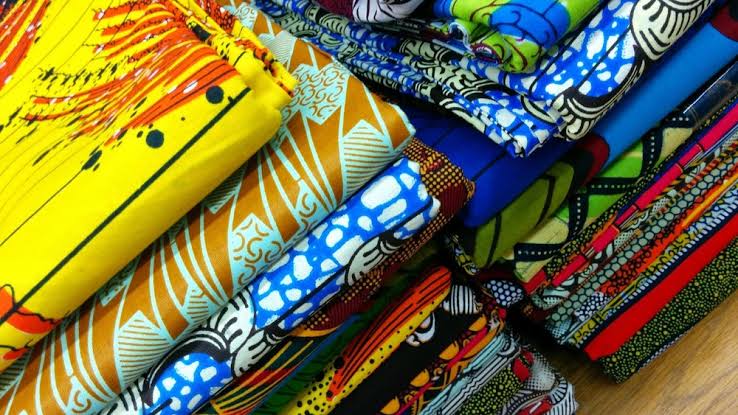
From the latest trends to the traditional designs, the Ankara fabric is a wardrobe essential that will never go out of style.
Outfits made with Ankara come in a variety of shapes, colors, and patterns, but when it comes to the fabric, you have to choose between cotton or silk. Some outfits also incorporate lace or embroidery, which adds a nice touch of style and elegance.
Akwaete/ Akwete
The Akwete cloth is a hand-woven fabric from the Akwete area, near Aba in Abia State in the south eastern part of Nigeria. This fabric weaving tradition is considered to be as old as the Igbo nation. Originally known as ‘Akwa Miri’, which translates to ‘cloth of the water’, its purpose stretches across the board. From everyday use to occasions and even worn by masquerades. The Akwete fabric is a traditional fabric of the igbo people of West Africa.
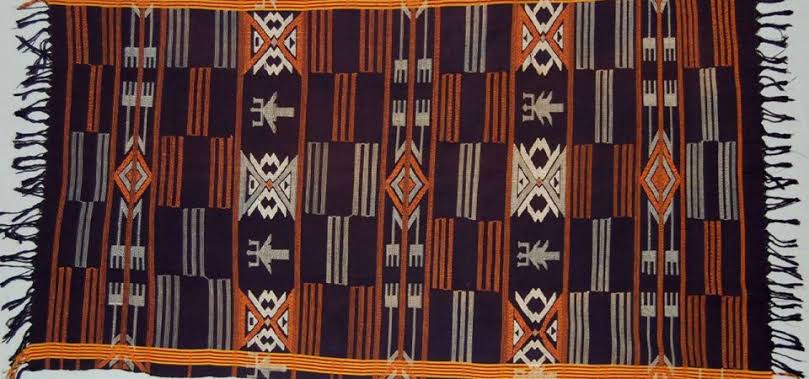
According to the designer’s studio, Legend has it that a woman named Dada Nwakata pioneered the intricate woven designs of Akwete seen today. Although the weaving tradition existed long before European contact between the 14th and 16th century, Portuguese traders inspired the new design. Nwakata unravelled and studied the textiles these traders brought. Dada then added some creative innovation to the design to create the Akwete known today. It is said that she put a spell on her weaving loom to protect her elaborate designs. And it was only on her passing did her close friend, the only person she allowed to witness her weaving, share the weaving process.
Akwete weavers claim that there are over a hundred motifs of the fabric in existence. It’s believed that the designs are revealed to the weavers by the gods. Thus, each weaver has an unwritten copyright for their design which no other artist is permitted to copy or steal. The motifs are named after their appearance and often play a role in social status. Some designs are reserved for royalty such as the tortoise motif called ‘Ikaki’. With slow and deliberate movements, the tortoise is considered to have king-like qualities. If a non-royal wore this design they would be punished. Then there is also the ‘Ebe’ design which is considered a protective talismans ideal for pregnant women and warriors.
When it comes to patterns, there are four main types of patterns used in Akwete cloths. There is the plain ‘Etirieti’, which is made up of stripes and squares. There is also the vibrant ‘Akpukpa’, the complex ‘Ahia’. Finally, the intricate ‘Ogbanaonweya’. Unlike the Kente and Barkcloth that was made by men, Igbo women traditionally handled Akwete weaving. They would begin as soon as their arms were long enough to operate the loom. It can take weeks to weave one of these wide masterpieces.
Akwete popularity grew in the region and beyond due to palm oil trade. In the 19th century, Abia State was a centre of the palm oil and palm kernel trade. The Igbo people began to trade the fabric for goods from international traders and the Sahara, as well as, other regions of present day Nigeria. This, along with the cloths vibrant colours and creative designs, helped spread the cloth’s fame. Making the Akwete one of Nigeria’s most famous textiles.
An Akwete chief, Rufus Nna James, fought for the cloth to garner international attention, and by In 1963, the fabric was exhibited at the Textile Museum in Washington, D.C., the British Museum in the UK, and the Textile Museum of Canada. This exhibition proved lucrative for the community. Prince Charles and Princess Diana brought further international recognition to the fabric by commissioning it in 1990. In more recent times, Nigerian novelist, Chimamanda Ngozi Adichie, has been spotted in the fabric as well.
The Akwete fabric has also been incorporated into contemporary fashion through designers such Kenneth Ize and Chinasa Chukwu. Emmanuel Okoro is most noted for his use of the Akwete cloth under his brand Emmy Kasbit. Using hand woven textiles made in Abia Sate, he fashions modern interpretations of dresses, skirts, shorts, suits and jackets. Chinasa Chukwu of Weruzo also gravitated towards the cloth because sustainability and cultural preservation is vital to her brand.
Aso Oke
Just like the Akwete fabric, Aso-Oke is a hand woven fabric. The name Aso Oke is the short version of the more formal Aso Ilu Oke which roughly translates to ‘clothes from the up-country’. It is the traditional wear of the Yoruba tribe who originate from the south-west of Nigeria. Aso-oke fabric often worn as a celebration cloth on special occasions and important events. This special hand-woven cloth has over centuries become somewhat of the style marker of the Yoruba tribe. It was said to have been created in Yorubaland around the 15th century and since then spread around the land and its environs.
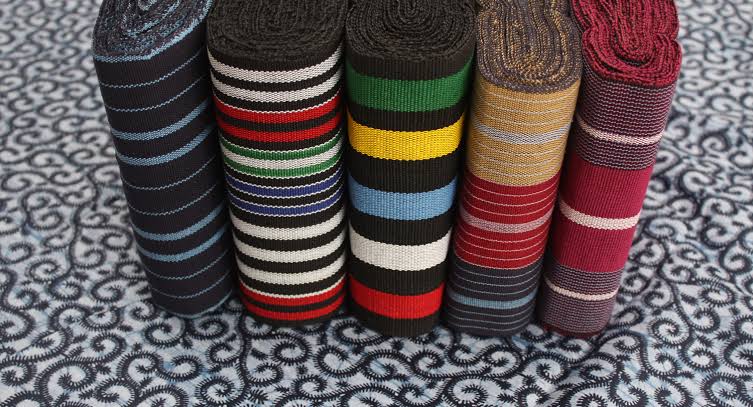
The method of making aso-oke is painstaking. The threads used to weave the material is made out of cotton. However, the entire process of creating the Aso-Oke fabric is a beautiful, with the artisans who have spent long perfecting their craft make it so effortlessly is heart-warming. Watching plain cotton transform into the perfectly woven threads used for Aso oke is testament to the craftsmanship we are capable of in Africa.
Despite being a traditional material, Aso-oke is making a very modern comeback. The new generations of creatives and designers are finding ways to marry the rich cultural history of Aso-oke with modern silhouettes.
One such designer who has successfully done this is Shekudo who is stocked on ONCHEK.com. The shoe and accessory designer’s signature look has become Aso-oke weave as they create modern and wearable footwear that is an ode to the Nigeria of the past.
Kente
The Kente cloth comes from a textile practice that originated in the West African country Ghana centuries ago. The fabric has come to symbolize cultural affiliations from West Africa to several nations across the diaspora.
Talking about the origin of the Kente cloth, legend has it that a spider spinning a complex web inspired the earliest kente techniques and designs.

Weaving the kente cloth is a cultural tradition of the Asante (also known as Ashanti) people, and these fabrics were originally used exclusively to dress kings and their court members.
Each block, pattern, and color of the Kente cloth has a distinct name and meaning, and the cloth often includes adinkra symbols, which represent concepts or sayings.
For example, an often used kente pattern is, in Twi, Woforo dua pa a na yepia wo. It means “when you climb a good tree you are given a push;” put another way, when one takes up a worthy cause, one will be supported by their community.
The Ewe people of western Africa have also woven kente cloth for centuries, though according to kente master weaver Kwasi Asare, who is often commissioned to create unique kente pieces and teaches workshops in the U.S., their designs are typically more “representational,” where Asante kente designs tend to be more abstract.
According to the Sankofa Edition and Adinkra Brand, here are a few colors commonly found in kente cloth, and their meanings:
● black: Maturity, spiritual strength, mourning and funeral rites
● red: Death, blood, political passion, strength
● blue: Love, peace, unity, and harmony
● gold or yellow: Royalty, wealth
● green: Harvest, growth, renewal
● white: Cleansing rites, purity, festive occasions
● purple or maroon: Healing, Mother Earth, protection from evil.
Additionally, a tell-tale identifier of kente cloth is its vertical strips of fabric, which are typically four inches wide. These strips are then cut and sewn together to create larger swaths which can be worn on the body. By placing blocks of pattern next to one another, a meaning for the whole piece emerges. Historically, when kente was used solely for royal courts or prestigious occasions, because the strips were made of silk.
However, today you’ll also find kente made of cotton or rayon blends. While weaving kente is traditionally men’s work, it is common to see both men and women donning these beautiful, wearable artworks.
Kente cloth is one of the most well-known textile export from the African continent to the western world. The fabric has also come to symbolize a sort of solidarity with an African heritage. In 2020, a group of Democrat US senators wore kente cloth while kneeling for nine minutes in remembrance of George Floyd.
Also, kente fabrics are worn with pride by Black college graduates every spring. In 1960, upon the occasion of Ghana’s independence, the nation’s first president Kwame Nkrumah commissioned a kente cloth to be displayed at the United Nations General Assembly in New York. In 1995, Kwasi Asare was asked to create another rendition to replace the one originally woven by his father. As such, kente cloth has been a symbol of Black sovereignty in the U.S. for many decades, with its eye-catching designs and stories woven into each section of silky fabric.
African Lace
Another popular fabric used in making a variety of beautiful African styles, is the African lace. This fabric has items of sequence lace fabric, lace ribbon, sequins and beads. This fabric can be made from material such as organza, sequins, cotton, silk and others.
African laces are often made with delicate fabric with very rich in elaborate embroidery—These delicate fabrics made in web-like patterns by either machine or hand.
They are very different from the laces of Europe and America as they are worn in very traditional designs that demonstrate their rich heritage. African lace is commonly used in making the popular #AsoEbi styles.
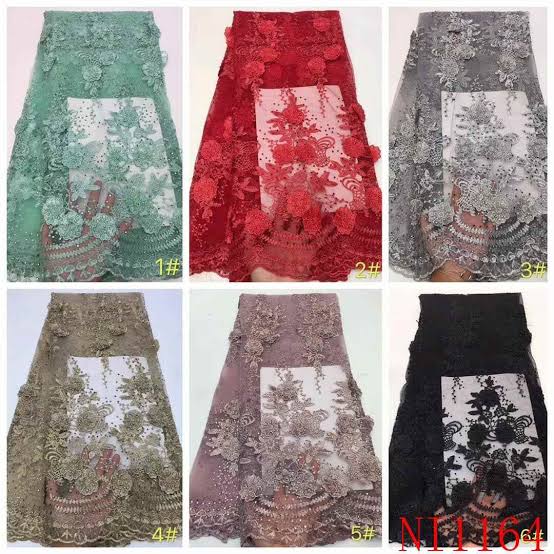
African Laces were hitherto specifically and specially made for kings, queens and aristocrats back in the 20th century, however, in present they can be worn by anyone as traditional African attire. They are usually worn during festive occasions.
The special finish on the African Lace Fabric ensures the highest qualities that neither loses color nor shrink. Counterfeit and fake copies often shrinks and loses both shape and color as it’s made of lower class fabric so one has to be careful when purchasing laces. The african lace fabrics are a popular fabric known and revered for its delicate, lightweight material and distinctive weblike pattern.
15 Best African Fashion Styles In 2022
Now that you have learned about some of the popular fabrics used in making some of the best African fashion styles in 2022, here are 15 beautiful outfit styles to choose from.



These gorgeous contemporary outfits made from akwete is one of the best African outfit styles in 2022. They are classy and trendy.



One of the best African fashion styles in 2022 are made from Kente fabrics. They are super gorgeous.



Usually worn by Couples during their wedding ceremonies, The aso oke fabric makes beautiful outfits. These are some of the best African styles in 2022.
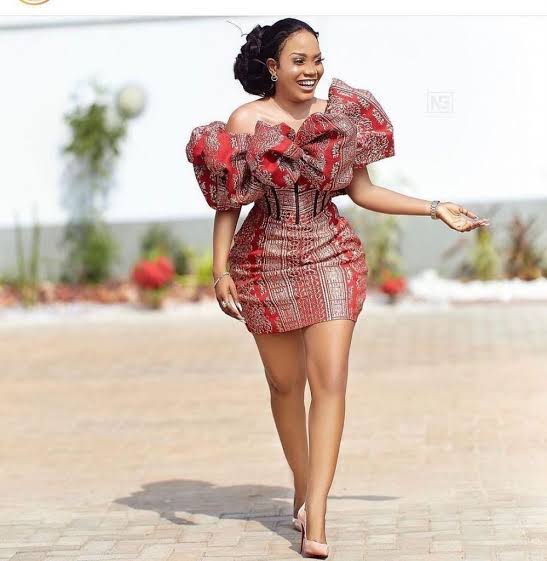
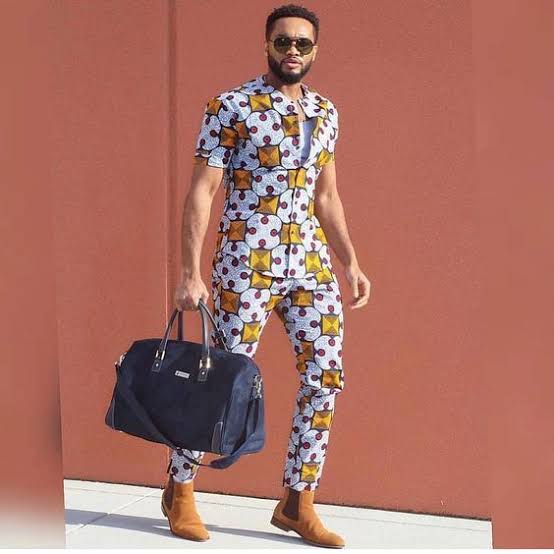
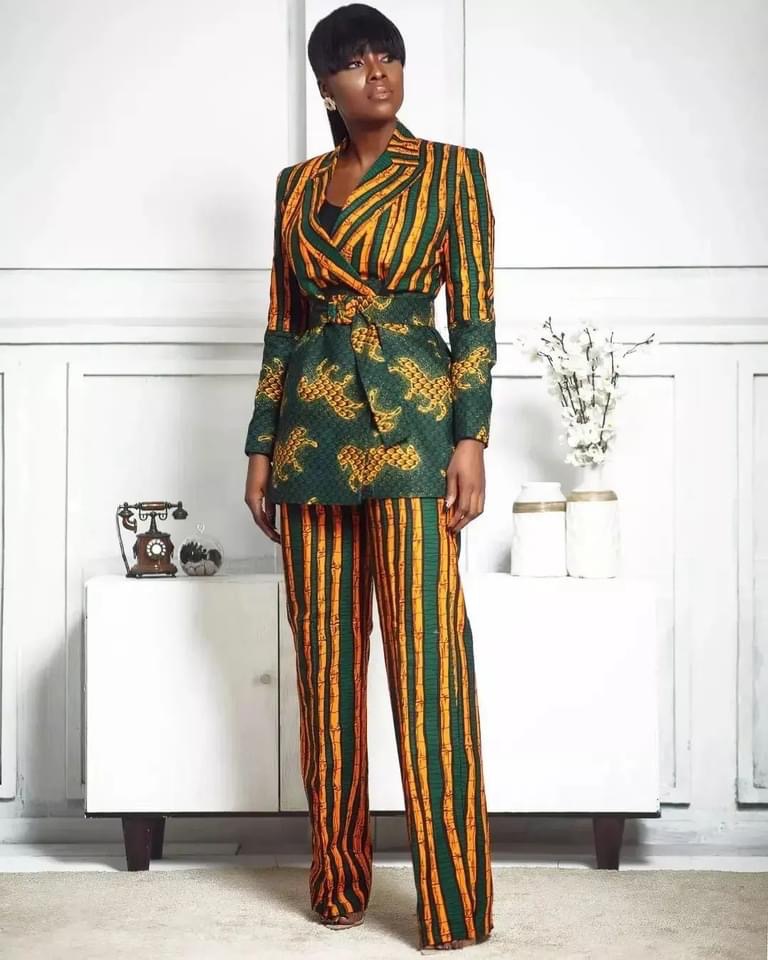
Ankara fabrics are very popular and versatile. They blend perfect to make any kind of outfits. Some of the best African styles in 2022 are made from Ankara.



African lace fabrics are usually worn during ceremonies. They make some of the best African styles in 2022.

